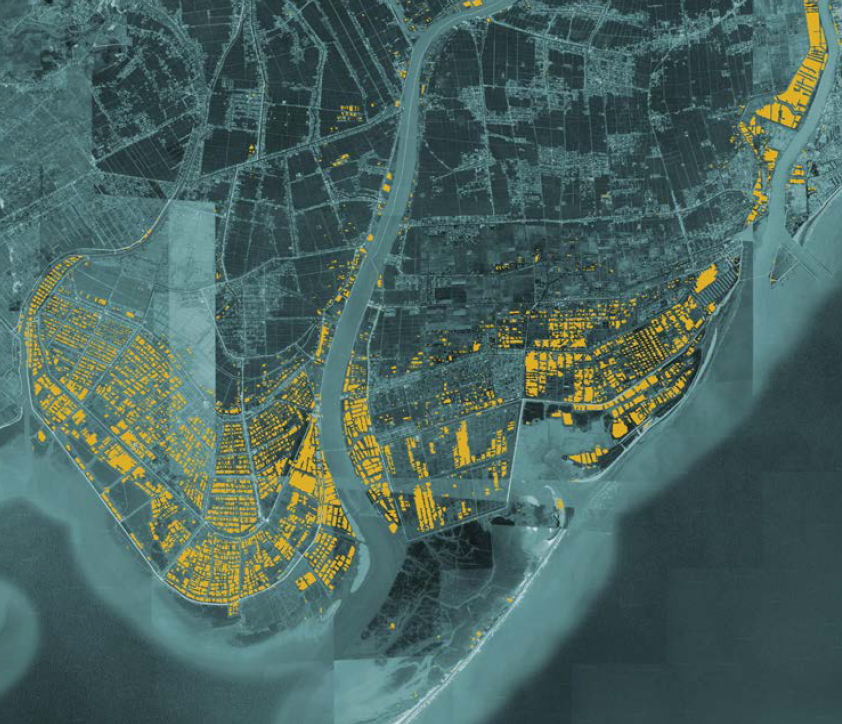 ベトナム・ホイアンの冠水した道路。(出典:Toomas Tartes/Unsplash)
ベトナム・ホイアンの冠水した道路。(出典:Toomas Tartes/Unsplash)
In a country that is among the most exposed to natural hazards, Vietnam’s coastal communities frequently experience typhoons, storm surges, flooding, coastal erosion, droughts, or saline intrusion. In the coming years, these disaster risks are bound to increase with rapid urbanization, economic growth, and climate change. Yet despite these risks, coastal regions host thriving economic sectors – including tourism, industry, and aquaculture – and can be a powerful engine for Vietnam’s continued socioeconomic development.
Resilient Shores, a new report jointly developed by the government of Vietnam, the World Bank, and the Global Facility for Disaster Reduction and Recovery (GFDRR) offers a systematic analysis of disaster risks, and sets out an action plan for boosting resilient coastal development.
Increasing natural risks to coastal communities
The risks to people are substantial. The report shows that around 12 million people in coastal provinces are at risk of intense flooding, and over 35 percent of settlements are located on eroding coastlines. As safe places are increasingly occupied, new developments concentrate in areas where flood risks are twice as high as in established urban areas.
Natural hazards also cause significant damage to key economic sectors and public services. Each year, about $852 million (0.5 percent of national GDP) and 316,000 jobs in the agriculture, aquaculture, tourism, and manufacturing sectors are at direct risk from flooding. Coastal tourism is heavily reliant on intact beaches and ecosystems, but 42 percent of coastal hotels are estimated to be located near eroding beaches. Nationally about half of the health care facilities are in high-risk flood zones, in some provinces it is nearly all of them. Over a third of Vietnam’s electric transmission and distribution grid is in forested areas, thus making them vulnerable to falling trees during storms . The resulting power outages disrupt production and lower equipment utilization rates.

Aquaculture ponds at risk: High-resolution satellite data can enable systematic risk assessments. Source: data by Ottinger et al 2018
While natural risks are already substantial, climate change is expected to intensify these hazards. In a pessimistic scenario, 30 cm sea level rise could increase urban coastal areas’ exposure to intense flooding by 7 percent, exposing an additional 4.5 million people. Up to 1.2 million people could be pushed into poverty by 2030 due to climate change.
Risk management measures fall short of the needs
While the government of Vietnam has made impressive progress in managing disaster risks in recent decades, these measures fall short of the country’s needs. Hazard and socioeconomic risk information is fragmented and often incomplete. A lack of guidance, enforcement, capacity and funding have led to shortcomings in implementing risk-informed spatial planning, building codes and safety standards, and systematic maintenance of infrastructure systems.
For instance, the report shows that two-thirds of Vietnam’s sea dike system, which stretches over 2,659 km, does not meet the prescribed safety standards. In many provinces, even the set standards are not strong enough to offer the needed protection. Nature-based systems can boost coastal resilience but are underappreciated and coming under increasing pressure from development and over-exploitation. For instance, on-shore tourism and aquaculture development is degrading coastal dune systems and exacerbating erosion. And although Vietnam has made progress in managing residual disaster risks, intensifying risks mean that it must further improve its systems for risk financing, and disaster relief and response.
Settlements on sensitive coastal dunes in Nui Thanh District, Quang Nam Province. Source: Google Earth
Balancing risks and opportunities
To ensure that Vietnam’s coastal regions can safely realize their economic potential, initiatives must be taken. Delaying measures by 10 years could expose an additional $4.3 billion of economic growth to natural shocks.
The report presents a concrete action plan to strengthen resilience in coastal areas, with five strategic intervention areas:
- Strengthen data and decision-making tools by establishing openly accessible databases of detailed hazard and risk data, as well as asset management systems for critical infrastructure, such as transport, water and sanitation, and electricity.
- Enforce risk-informed spatial planning to ensure that economic growth in coastal zones does not irreversibly lock in unsafe development patterns – such as new settlements in high-risk flood zones. Guide development into safer areas and mitigate disaster risks based on up-to-date hazard data.
- Strengthen the resilience of infrastructure systems and public services by integrating risk information into the planning, design, and maintenance stages of all infrastructure investments. Upgrade sea and river dikes, starting in the most exposed and under-protected areas.
- Take advantage of nature-based solutions through the rehabilitation, conservation, monitoring, and management of ecosystems. Relevant policies, regulatory frameworks, and technical guidelines must be strengthened.
- Improve disaster preparedness and response capacity by upgrading its early warning system, strengthening local response capacity, adapting social safety nets, and implementing a comprehensive risk financing strategy.
Additional resources:
- Download the Resilient Shores report





Join the Conversation